Itinerary edited by UNIVERSITY OF MODENA AND R. EMILIA 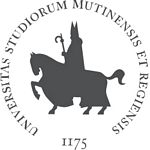

There is a functional relationship that binds the Earth sciences to the heritage of a determinate place through the natural and cultural environment in which that place developed and transformed in space and time. The museums dedicated to the Earth sciences, as well the Gemma 1786 University Museum (Bertacchini, 2007), are often the result of the culture and scientific thought of the community that created them and a tangible proof of the “geo”-history of the territory in which they are inserted.
 From the urban heritage to the museum’s collections, an itinerary in the historical centre of Modena
From the urban heritage to the museum’s collections, an itinerary in the historical centre of Modena
The Duomo (Cathedral) and the Ghirlandina Bell Tower, symbols of Modena, are protected from UNESCO as World heritage of the humanity together with the place on which they are placed, Piazza Grande (Great Square). The recent restoration works of the tower and the cathedral allowed to identify among thousands of ashlars of stone material that cover both monuments, 17 stones varieties coming from Veneto, Friuli Venezia Giulia, Istria and Turkey and coming mainly from the spoliation of Roman buildings and monuments that during the Middle Ages were the unique source of available stone material (Lugli, 2010).
The glimmer of the stone covering dominated by the tones of white, yellow and rosy of the used sedimentary rocks is at intervals interrupted by grey-yellow shades of trachytic rocks of volcanic origin that were largely used in Modena from Romans.
The Euganean Trachyte is an igneous effusive rock with porphyritic texture of colour going from grey to yellow dating back to Oligocene Epoch (32 millions of years ago). It was imported in Modena in big quantities by the Romans. Even though, it is a very strong rock, when it is used as covering material it is often subjected to severe exfoliation phenomena.
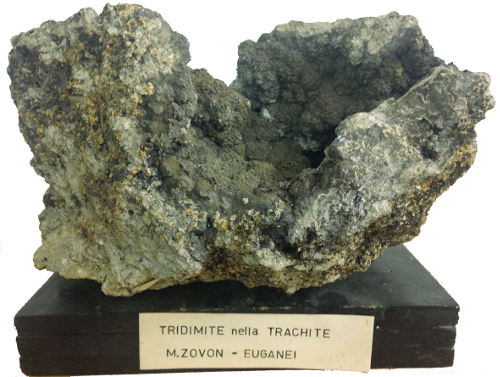 Trachyte Sample with Tridymite coming from Euganean Hills (Zovon, Padua). Historical Collections Gemma 1786 University Museum.
Trachyte Sample with Tridymite coming from Euganean Hills (Zovon, Padua). Historical Collections Gemma 1786 University Museum.
GO TO: EXPLORE THE COLLECTIONS
The Ammonitic Red is limestone or compact marly limestone, with fine grind, red, rosy or white coloured (violet and green tones are also frequent) because of the iron oxidation. The structure is generally nodular and gives to the rock a different resistance to the water and intense cold action. Ammonites fossils (cephalopods), belemnites, bivalves, crinoids articles are generally present. This litofacies is spread in Italy in the Southern Alps, in the Umbrian-Marchean Apennine and in Southern Apennine up to Sicily. It comes from pelagic environment (depth probably more than 200 metres) and formed between Middle Triassic and Late Jurassic. Starting from the Middle Ages the Ammonitic Red became the most common ornamental stone in Modena.
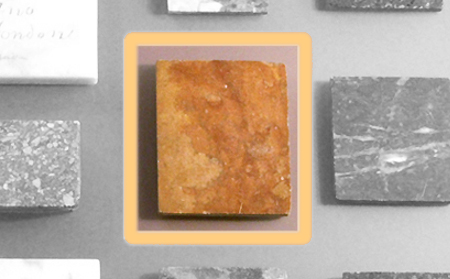 Small-sized tile of Ammonitic Red of the collection of minerals of Este Dukes. Historical collection Worked Rocks, Gemma 1786 University Museum.
Small-sized tile of Ammonitic Red of the collection of minerals of Este Dukes. Historical collection Worked Rocks, Gemma 1786 University Museum.
GO TO:
EXPLORE THE COLLECTIONS
The Ghirlandina or Bell Tower is among the most known symbols of Modena, monument dating back to XII century, 89,37 m high (ph. by M. Malacarne
 )
)
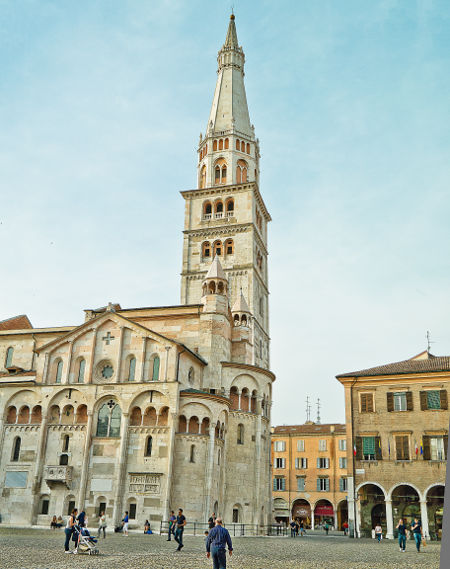
The square also holds the symbols of the historical memory of the city, among them the Preda ringadora (Stone of Harangue) that is doubtless a very particular element that characterizes Piazza Grande.
It is about a big block of Ammonitic Red from Verona of prismatic shape (300 cm length, 175 cm width, 57 cm thickness) that probably arrived in Modena during the Middle Ages through the navigable waterways. Today it is placed next the colonnade of the Palazzo Comunale (Town Hall). The name of this monolith, that in the commune language means “stone that harangues”, had during the time the function of harangue the crowd, stone of dishonor, window for the corpses identification.
La Pietra Ringadora (photo by Dread83 - Own Work, GFDL  )
)
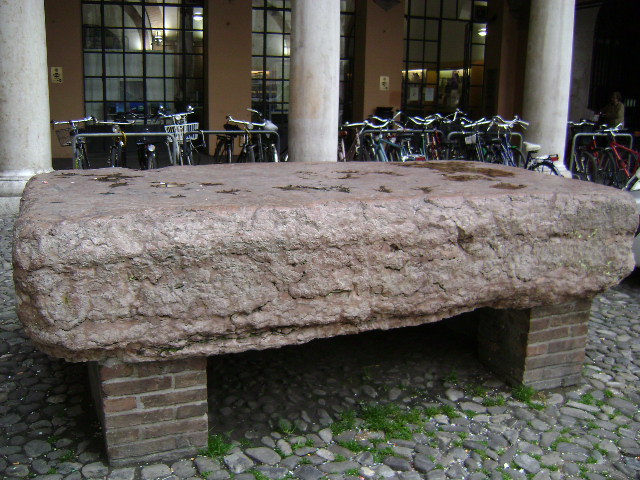
Landscape of Piazza Grande, Modena (photo by
Davidtsousa - Own Work, CC BY-SA 3.0
 )
)

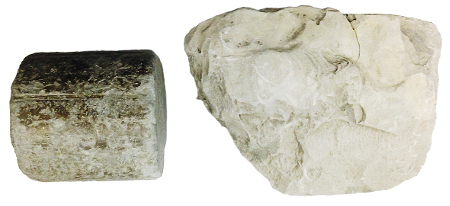
Sample of the Blue Clay Formation (Tiepido torrent, Maranello, Modena), dating back to Plio-pleitocene age (5,3-1 million of years ago) with the characteristic grey-blue colour and with the big presence of fossils, moreover tests of mollusks, corals, foraminifera. Educational collection Gemma 1786 University Museum.
GO TO:
EXPLORE THE COLLECTIONS
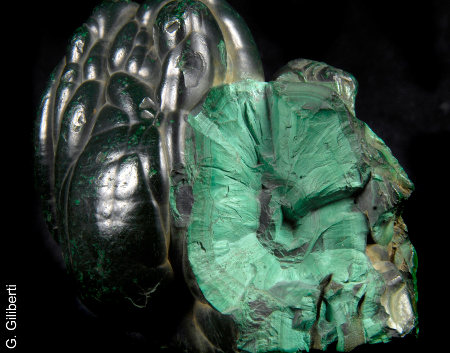
Sample of Malachite coming from Ural Mountains (Russia). Historical collections, Gemma 1786 University Museum.
GO TO:
EXPLORE THE COLLECTIONS
The chromatic landscape of the cities is often expression of the geology of the territories of reference. The white and red duotone resulting by the contrast among the white stone materials and brick wall surface dominates the palaces facing on Piazza Grande.
From the Middle Ages on, the brick, that is “cooked stone”, is the most used construction material in the city, since in the whole Modena territory, hills and plain, there is a huge availability of clayey raw materials.
The lateritious, that is “cooked stone”, is the most used construction material in the city, since the clay, which mainly constitutes it, is widely spread in the whole Modena territory, both hills and plain. The clay is mainly composed of aluminum silicate and in a smaller measure of calcium carbonate with a few quantity of iron oxide and water. Thanks to its features, the clay is one of the cheaper and largely used materials for the production of bricks, tiles and baked clays.
Today, the unique room in the Ghirlandina Tower till totally frescoed is the Sala della Secchia (Room of the Bucket). Its name comes from the wood and iron bucket that the Modena citizens stole from a public well placed in San Felice street, in the city centre of Bologna, during the Zappolino Battle (1325). The room appears like a big case entirely frescoed and opened on a starry sky; the walls are completely covered by painted fabrics as in the use of the fourth century.
Sala della Secchia rapita (Room of the Stolen Bucket),
inside the GhirlandinaTower
(picture offered by TripAdvisor  ).
).
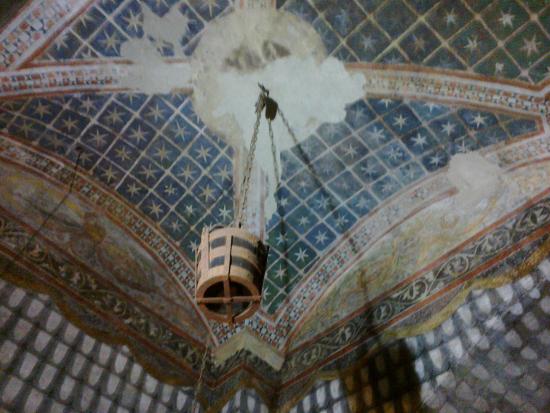
The pigments used for the yellow and red tones of the decorations are made of ochre, then the green is represented by green earth, a pigment used already during the Roman Republic time and coming from Baldo Mountain (Verona). In the ceiling, there is malachite perhaps coming from the alteration of azurite.